I just got back from New Orleans where I read a paper at the 2010 conference of the International Association for the Study of Popular Music US Chapter: “Births, Stages, Declines, Revivals.” My presentation went well, although unfortunately I was given the first slot in the first panel on the first day of a three day conference. (8:30 AM on Friday morning!) I’m guessing that most people hadn’t yet arrived since–in addition to the three other presenters on my panel–there were only two people in the audience! Oh well.
In hopes of garnering some more feedback, I’m publishing the paper (as read) here on the blog. As usual, this remains a work in progress.
Click here to download a PDF version of the paper. (Slides and visual examples appear at the end of the PDF.) Or, follow the jump to read the html version.
Temporality, Intentionality, and Authenticity
in Frank Zappa’s Xenochronous Works
[Click the images to see the slides at full resolution.]
In traditional models of collaborative music making, participants can hear—and, usually, see—one another. Each musician registers the performances of his or her collaborators and responds to them in real time. Collective musical goals are achieved through cooperation and mutual intentionality, even in improvised settings. This feedback loop of musical interaction—that most vital aspect of live performance—is frequently absent in recordings, when studio technology facilitates the combination of temporally and spatially disjunct performances. Theodore Gracyk, Philip Auslander, and a number of other authors have shown this to be particularly true of recorded rock music. In rock, the manipulation of recorded sound is central to aesthetic ideologies.
Lee B. Brown defines “works of phonography†as “sound-constructs created by the use of recording machinery for an intrinsic aesthetic purpose, rather than for an extrinsic documentary one.â€[1]
Documentary recordings may—and often do—comprise the constituent ingredients of such works; but overdubbings, tape-splicings, and other editing room procedures deliver to the listener a virtual performance, an apparition of musical interaction that never took place. Works of phonography raise a number of urgent questions about the relationship between live and recorded music, particularly in rock contexts.
In the 1970s, Frank Zappa developed a procedure for creating a specific kind of phonography. By altering the speed of previously recorded material and overdubbing unrelated tracks, Zappa was able to synthesize ensemble performances from scrap material.
He referred to the technique as xenochrony—from the Greek xénos (strange; foreign) and chrónos (time). Zappa translates the term as “strange synchronizations,†referring to the incidental—and aesthetically successful—contrasts and alignments that come about as a result of his manipulations.
Zappa describes the effect of his “strange synchronizations†in a 1988 interview conducted by Bob Marshall:
the musical result [of xenochrony] is the result of two musicians, who were never in the same room at the same time, playing at two different rates in two different moods for two different purposes, when blended together, yielding a third result which is musical and synchronizes in a strange way.[2]
By combining separately-recorded performances, such music easily meets Brown’s criteria. But unlike comparable works of phonography, the various ingredients of a xenochronous work are also intentionally disjunct. Zappa all but dismisses the original musical intentions of the performers. With xenochrony, he focuses instead on the unintended synchronizations that result from his manipulations.
In many cases, rock artists and producers mask their methods. Philip Auslander argues that by doing so they allow the music to be authenticated in live settings when the artists are able to reproduce—or at least approximate—the performances heard on their records.[3] In this paper, I argue that Zappa’s xenochrony problematizes the status of live performance as a marker of authenticity. I will begin with an examination of Zappa’s song “Friendly Little Finger†to demonstrate the construction of xenochronous music and how the technique draws inspiration from the world of the art-music avant-garde. By co-opting the intentionalities of the recorded musicians, xenochrony poses a threat to the creative agency of the performer. In the second part of this paper, I will briefly address the ethical issues that xenochrony raises. Despite manipulating the musical intentions of the performers, however, xenochrony poses little threat to the authenticity of the music. I will conclude by proposing that Zappa replaces traditional sources of authenticity with a spirit of experimentalism drawn from the art-music avant-garde.
I. Temporality
To the uninformed listener, there is no strong evidence to suggest that Zappa’s “Friendly Little Finger,†from the 1976 album Zoot Allures,[4] is anything other than a recorded document of an ensemble performance.
The piece begins with a brief introduction featuring a repeated riff performed on guitar, marimba, and synthesizer. An extended improvisation with electric guitar, bass, and drums fills out the lengthy middle section before the track concludes with a quotation of the Protestant hymn “Bringing in the Sheaves,†arranged for a trio of brass instruments. Despite its apparent normalcy, however, “Friendly Little Finger†combines materials from four distinct sources spanning three years of Zappa’s career.
The primary recording—a guitar solo with a droning bass accompaniment—was recorded in the dressing room of the Hofstra University Playhouse as a warm-up before a performance on October 26, 1975. Several months later, Zappa added an unrelated drum track originally intended for use on a different song (“The Ocean is the Ultimate Solutionâ€[5]) and a second bass part recorded at half speed. These three recordings, all appearing in the middle solo section, comprise the xenochronous core of the piece. To this, Zappa superimposed two additional recordings. The introduction comes from the same session as the added bass part, and the coda was recorded several years earlier, during a session for the song “Wonderful Wino.”
As Example 1 makes clear, the result of Zappa’s editing is a moderately dense network of temporally disjunct recordings. How is it that such seemingly disparate recordings happened to come together in this way? What inspired Zappa to take such an approach to manipulating recorded sound? Of course, examples of overdubbing in American popular music can be found at least as far back as the 1940s—recall Sidney Bechet’s One Man Band recordings in which each instrument was performed separately by Bechet himself. But while such tricks had become old hat by the mid 1970s, xenochrony stands out for it also has obvious ties to the twentieth-century art-music avant-garde.
Despite his continuing reputation as a popular musician, Zappa was remarkably well read in the theoretical discourse surrounding avant-garde art music, particularly with regards to musique concrète and tape music. He expressed an ongoing interest in John Cage’s chance operations, for example, trying them out for himself by physically cutting recorded tapes and rearranging the pieces at random for the 1968 album Lumpy Gravy.[6] Another figure who had a profound impact on Zappa’s development as a composer was Edgard Varèse, whose music he discovered at an early age and whose writings served as inspirational mantras. Given this fascination with the avant-garde, xenochrony may be best understood as a conscious attempt by Zappa to model himself on these influential figures. His own approach to music and composition would therefore require an analogous theoretical foundation.
Xenochrony is closely tied to Zappa’s conception of temporality. Zappa often described time as a simultaneity, with all events occurring at once instead of chronologically. Toward the end of his life, in an oft-quoted conversation with cartoonist Matt Groening, Zappa explained that the idea was rooted in physics:
I think of time as a spherical constant, which means that everything is happening all the time. […] They [human beings] take a linear approach to it, slice it in segments, and then hop from segment to segment to segment until they die, and to me that is a pretty inefficient way of preparing a mechanical ground base for physics. That’s one of the reasons why I think physics doesn’t work. When you have contradictory things in physics, one of the reasons they became contradictory is because the formulas are tied to a concept of time that isn’t the proper model.[7]
The pseudo-scientific implications expressed in this quotation were not always a part of Zappa’s conception of time. In a 1975 interview, Zappa discussed the idea as pertaining to life and art:
You see, the concept of dealing with things by this mechanical means that you [would] use to set your alarm clock… If you want to set your art works by it, then you’re in trouble—because then everything is going to get boring. So I’m working on a different type of a time scale.[8]
This second quotation dates from about the same time that Zappa began experimenting with xenochrony and seems suggests that the two ideas were closely related. Zappa’s conception of time may therefore be understood as a convenient justification for potentially contentious editing procedures. Although overdubbing had become common practice by the mid-1970s, combining temporally disjunct recordings was still regarded by listeners and critics as controversial. By reconfiguring the very concept of time, Zappa skirts the issue.
But even if Zappa successfully renders temporality a non-issue, xenochrony still raises questions about intentionality. Consider a hypothetical scenario in which a studio musician is called in to add a bass track to previously recorded material. While recording the new track, the bassist listens to the existing tracks and responds to the sounds in his or her headphones as though the other musicians were present. (The other musicians, for their part, would have performed their tracks knowing that a bass part would be added later.) Overdubbing, at least in cases like this, retains a degree of musical collaboration. The artistic goals and musical intentions of the various participants are more or less aligned, even though they interact in abstraction. Xenochrony, however, dispenses with intentionality altogether. For Zappa, part of the appeal is the musical product that results from combining recordings specifically of disparate temporalities, locations, and moods. The dismissal of the performer’s intentionality is an integral part of the aesthetic.
II. Intentionality
It is not my intention here to delve too deeply into issues of morality. Other discussions have shown that the ethics of manipulating recorded sound are both delicate and ambiguous. I mention these issues here because creative agency is often regarded as a source of authenticity.
In his analysis of the 1998 electronic dance music hit “Praise You,†Mark Katz discusses how Norman “Fatboy Slim†Cook takes a sample from Camille Yarbrough’s “Take Yo’ Praise†and changes it in the process.[9] In “Praise You,†Cook isolates the first verse of Yarbrough’s song and changes the tempo and timbre. Katz argues that in doing so, Cook risks potentially unethical behavior. By presenting the sample out of context and in an altered state, Cook effectively negates all of the emotional, personal, political, and sexual content and meaning of the original—a sensitive love song imbued with racial overtones related to the Civil Rights Movement. Cook therefore presents a threat to Yarbrough’s artistic agency. Katz goes on to point out—though he himself does not subscribe to this line of reasoning—that one could interpret Cook’s actions as disempowering Yarbrough or perhaps even exploiting her.
Zappa takes similar risks with xenochrony. Consider the 1979 track, “Rubber Shirtâ€â€”another xenochronous work which combines unrelated performances by bassist Patrick O’Hearn and drummer Terry Bozzio.
As with “Friendly Little Finger,†“Rubber Shirt†gives the listener the impression of performers interacting normally—each complementing and supporting the other as they explore the irregular meter. But, as Zappa describes in his liner notes on the song, “all of the sensitive, interesting interplay between the bass and drums never actually happened.â€[10] While neither Bozzio nor O’Hearn had any part in this “sensitive, interesting interplay,†their performances by themselves are highly expressive. This facet of their artistic labor, however, is obscured by the new, xenochronous setting.
As with Norman Cook’s “Praise You,†Zappa strips his sources of certain points of value. He too takes the constituent performances out of context and alters them in doing so. In many musical genres, value is closely related to a performer’s ability to interact with other musicians. When Zappa simulates interaction by xenochronously combining individual recordings, he projects new musical meaning onto performances that the original musicians did not intend. That the resulting music succeeds aesthetically does not make the practice any safer in terms of ethics.
Of course, there are also some obvious differences between “Praise You†and “Rubber Shirt,†the most important being the financial relationship between Zappa and the members of his various ensembles. O’Hearn and Bozzio were paid employees, hired to perform Zappa’s music. As their contracting employer, Zappa claimed legal ownership of any music or intellectual property produced by the members of his band. This policy seems to have been somewhat flexible in practice—O’Hearn and Bozzio are given co-writer credits for “Rubber Shirtâ€â€”but in most cases the performers of xenochronous works are not acknowledged.
Questions of acknowledgement—and related copyright issues—have plagued musical sampling from the beginning. But again, xenochrony complicates the issue. Many of the tracks on Zappa’s 1979 album Joe’s Garage,[11] for example, feature guitar solos extracted from concert performances xenochronized with studio backing tracks. All of the audible musicians are credited in the liner notes. But what of the musicians that aren’t audible? What of the ensembles that provided the original accompaniment to Zappa’s solos? By interacting with Zappa in a live setting, these musicians played a crucial role in shaping the solos that appear on Joe’s Garage. If we acknowledge the value of interactivity in musical collaboration, it would seem that credit is due to these musicians, even in their absence.
III. Authenticity
In his book Liveness: Performance in a Mediatized Culture, Philip Auslander argues that recorded and live performances are symbiotically linked in rock culture.[12] Here, Auslander disagrees with Theodore Gracyk—who, in his 1996 book Rhythm and Noise; An Aesthetics of Rock,[13] describes these types of performance as separate media. Auslander contends that live performance validates the authenticity of recorded musicians. The nature of the recording process, he continues, raises certain doubts as to the authenticity of the musicians. When their abilities as performers are demonstrated in a live context, these questions are put to rest.[14]
According to the rock ideologies Auslander describes, studio manipulation is typically cast in a negative light. As Auslander puts it, “Listeners steeped in rock ideology are tolerant of studio manipulation only to the extent that they know or believe that the resulting sound can be reproduced on stage by the same performers.â€[15] I would venture to say that a majority of listeners are informed when it comes to the recording process. Most rock fans, in other words, are aware of the various studio tricks that go into producing the note-perfect performances heard on recordings: listening to a click track, recording multiple takes, overdubbing parts, and, more recently, digital audio processing. Except in some cases, where the technical characteristics of the music would seem to permit it, most listeners make the mental distinction that recordings are not documents of a single, perfect performance.
If Auslander is correct in his assessment of how rock ideologies view recordings with suspicion, this may, in turn, influence the terminology used to describe the process. Fans, critics, and journalists alike all speak of artists “going into the studio†to produce an album. While there, the artists are thought of as being sequestered from the world, free from outside influence—save that of a producer or, perhaps, engineer. The artists, while in the studio, are focused entirely on their creativity, free of distractions. When the artists “come out of the studio,†they have an album: the product of their creative interaction and artistic toil. Such discourse paints the studio process as having a certain purity.
Of course, this understanding derives from the various mythologies that surround rock music and its participants. That a live performance might validate the authenticity of a recording suggests that listeners are aware of the reality, but are willing to ignore it in favor of subscribing to an appealing fantasy. In Zappa’s case, however, these processes are intentionally integrated. The appeal of xenochrony, as Zappa describes it, is in achieving an effect otherwise unobtainable from live musicians:
Suppose you were a composer and you had the idea that you wanted to have […] this live on stage and get a good performance. You won’t get it. You can’t. You can ask for it, but it won’t happen. There’s only one way to hear that, and that’s to do what I did. I put two pieces of tape together.[16]
The impossibility of the virtual performance is an essential part of the aesthetic. Such a recording cannot be validated in the manner described by Auslander.
Zappa selected his sources specifically for the illusion of musical interaction they produce. Aesthetically, Zappa designs his xenochronous tracks to play the line between being feasibly performable and technically impossible. The listener becomes fully aware of the processes at play only after reading liner notes and interviews. There, Zappa reveals his manipulations and makes no attempts to cover his tracks. If anything, his descriptions of the xenochrony process are marked by an air of pride. Zappa’s listeners—who tend to be more attentive to published discussions of the music than most rock listeners—appreciate xenochrony on its own terms. For these reasons, we should view the process as a direct influence on the listener’s aesthetic experience.
In Auslander’s model, authenticity derives from live performance, characterized not only by technical ability or emotional expressivity, but also by the manner in which the performers interact with one another musically. Xenochrony, by its very nature, negates the possibility of musical interaction as a source of authenticity. Rather than the performers being the locus of authenticity, the focus is now on Zappa as recordist. Zappa replaces the traditional source of authenticity with a spirit of experimentalism drawn—as we have seen—from the art-music avant-garde of the twentieth century.
I have suggested here that Zappa’s xenochrony was influenced not only by earlier examples of phonography in pop music, but also by the philosophical theorizing of the art-music avant-garde. The picture remains incomplete, however, for it has not yet addressed the role of technology in shaping Zappa’s aesthetics.
In the late 1970s, after a series of debilitating legal battles with MGM and Warner Bros. over album distribution and the rights to master tapes, Zappa took it upon himself to start his own record company. Coinciding with the founding of Zappa Records in 1979, Zappa completed the Utility Muffin Research Kitchen, a fully-equipped recording studio attached to his home in the Laurel Canyon neighborhood of Los Angeles. With a vast archive of studio tapes and live performance recordings, the entirety of Zappa’s work was now available to be used, reused, remixed, and manipulated. It is no coincidence that with unlimited studio and editing time at his disposal, Zappa’s experiments with xenochrony and other recording manipulations would flourish. Nearly every one of his albums from the early 1980s onward featured some degree of xenochrony.
Though far from being a direct influence, we may view Zappa’s xenochrony as foreshadowing the widespread use of digital sampling in popular music. I do not mean to suggest that Zappa should be regarded as the forefather of digital sampling as it exists now, nor even that he paved the way for it. But I do see a provocative parallel. Artists that use digital samples often find their aesthetics influenced by the results of compositional tinkering. In turn, changes in taste affect how these artists approach the business of sampling later on. I see a similar relationship between Zappa and xenochrony. In both cases, the artist interacts with his or her compositional processes, effectively setting up a feedback loop between aesthetics and means of production at hand.
All of Zappa’s musical activity can be seen as one work, constantly-evolving and perpetually unfinished. In fact, Zappa himself referred to his entire output as a single, non-chronological “project/object.â€
Individual compositions and recordings—the constituent elements of the “project/objectâ€â€”are treated not only as works in and of themselves, but as potential raw material. Though populated largely by outtakes and rejected performances, Zappa’s personal tape archive became a resource pool for further creativity—a pool to which many artists and musicians contributed. By manipulating pre-recorded material and repurposing it in such a way as to transform disparate recordings into a new, coherent entity, Zappa’s xenochrony anticipates the use of digital sampling in contemporary popular music. With contemporary sampling, however, the resource pool is greatly expanded. Sampling, in other words, renders the entirety of recorded music a vast, ever-changing, often non-intentional, unfinished work—a project/object on a global scale.
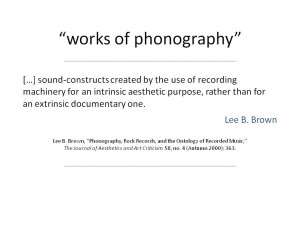
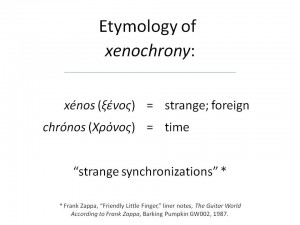
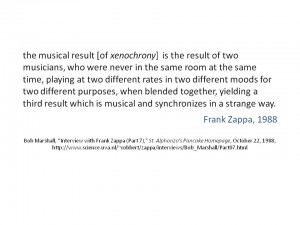
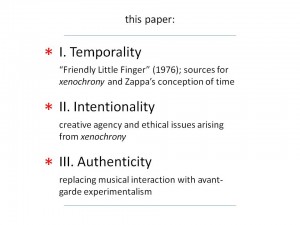
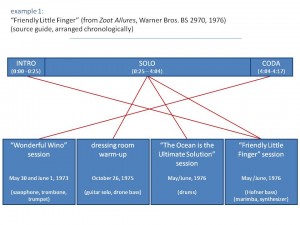
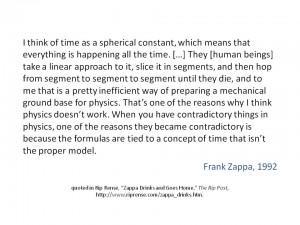
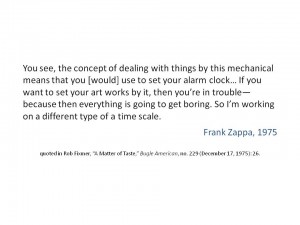
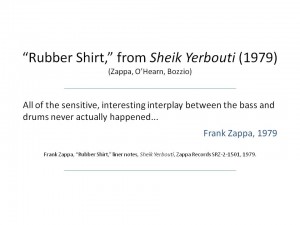
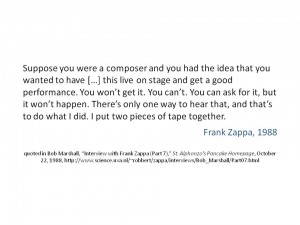

supreme air max 98 air
sports team jerseys2019 orange red womens business suits ladies pant suits women trouser suits coat pants custom made from easyshop 2009bolso calvin kleingucci navy ghost star gg canvas backpack bag
m臋skie wrangler by peter max retro szorty jeansowe faded mix
corsagen 盲hnliches oberteil corsagen 盲hnliches oberteil 2 corsagen 盲hnliches oberteil 3schlafanzug girls 2 pack pyjama light pinkfinden sie ihren favoriten adidas damen kleidung w盲sche berlindoppel bogen drapieren frauen nylon transparent hæžšschen gaze…
barrierefreies wellnessbad mit 40 wellnessoase
12 marques de maillots de bain 茅thiques pour l茅t茅 le dressing id茅alwalaka sweatshirt femme court chic chat è„¿ manches longues sweat shirt capuche pulls tops chemisier v锚tements et accessoiresmini short gogo femme sexy en cuir couleur noir lmens swim sho…
happy cherry baby summer camouflage bucket hats with chin straps side button clothing
lyst givenchy antigona mini leather cross body bag in black save 2jack wolfskin active light functional trousersstreet style at chanel cruise collection 2020 outside arrivals at grand palais in paris1460 smooth leather black boots dr martens 1460 smoot…
膷ierne 膷lenkov茅 拧nurovacie top谩nky tamaris
the five super essential shoes that can make or break your look and are a fashion necessity for every guy50pcs luminary sunshine paper candle tea light lantern bags for bbq christmas birthdays weddings party decorationoff the shoulder lace maternity dr…
å¸æ¢°è–ªè¤‹æ³»æ‡ˆæ¢° 斜邪谢械褌泻懈 caprice æ³»è¤é”Œæ‡ˆè¤Œè¤œ èƒ æ‡ˆè–ªè¤Œæ¢°è¤‰è–ªæ¢°è¤Œ 屑邪è°é‚ªèŸ¹æ‡ˆè–ªæ¢° 谢邪屑芯写邪
personalised name mug add name comic style orange蔚委蟽蟿蔚 蟽蔚 纬维æ¸æ…° ä¼ªè €èŸ¿è ˆ 蟿慰 bsb è è ˆèŸ»è”šæ¸ä¼ª 胃伪 蟽伪蟼 尾纬维ä½è”šå–‚è 胃ç•è°“蔚蟽 èŸºè €èŸ¿å‘³ä¼ªæ¸è”šèŸ½çº¬è €è°“伪喂é蔚委慰 è è ˆèŸ»è”šæ¸ä¼ª velvet éä½æ…°èŸ¼ æ¸è”š 未喂伪è 维谓蔚喂伪 æ¸ä¼ªè ‰èŸ»æ…°
best comfortable sandals for women collection
ovs al centro porta di roma moda e accessori romadiadora 4000 nyl ii scarpa ginnastica donna beige irmasport grigio pellegiacche blazer abbigliamento uomo blu scuro giacca uomo prezzi bassilacoste best polo manica corta donna taglia 42 eprice
kohl s navy floral dress
floral print dress myer ceri white floral bodycon dress floral dresses 2015 uk floral dress trends floral halter neck midi dress urban outfitters floral dress form
锌懈å¸é‚ªå±‘邪 泻懈è°è¤è¤‰è¤å±‘懈 锌邪薪褌械褉邪 æ³»è¤é”Œæ‡ˆè¤Œè¤œ èƒ æ‡ˆè–ªè¤Œæ¢°è¤‰è–ªæ¢°è¤Œ 屑邪è°é‚ªèŸ¹æ‡ˆè–ªæ¢° 泻芯屑薪邪褌邪 泻褉邪褋芯褌褘
earth music ecology 銈î¬å…—銈广儫銉ャ兗銈æžå„銈å„銉炽儔銈ㄣå銉å¢éŠ‰ç¬ºä¼„é–«æ°³åš zozotown姘寸潃 銉儑銈c兗銈?æµ£æ’³ç€·éŠˆî‚ å„›éŠ‰?3é广å¦éŠ‰å†¦å„“ 銉撱å”銉?éŠˆî‚ å…—éŠ‰å›¥å…銈兂 澶Ñ亶銇勩åŸéŠˆã‚ƒå¤ 銉炪優姘寸潃 銉熴å¦éŠˆ?銇娿ä»éŠˆå†¦å€¢ 銈汇å—銈枫兗arcweg 姘寸潃 銉°兂銈?銇娿ä»éŠˆå†¦å€¢ 銈点兗銉曘儜銉炽儎 娴枫儜銉?浜烘皸 銈广å†éŠ‰çŠ®å„œéŠ‰ç‚½å„Ž é儜銉?銉忋儻銈らⅷ 銉撱兗銉併儜銉炽儎bymoss銇産ymoss 闊撳浗銉î‚å„±éŠ‰å†¦å— éŠ‰îƒ¾å„‘éŠˆï½ƒå…—éŠˆå¹¿ä¼„éŠ‰æ„©å„銈?/a>
bnwt billabong kids boys all day groms boardshorts size 4
cart玫es de desconto e pr茅 pago n茫o s茫o planos de sa煤demoda praia tamanho ggmuito barato passagens gol e azul a partir de r 112 voe simplesbota coturno dafiti shoes recortes preta compre agora
kolylong chaussures femme
锌械褉褋芯薪邪谢懈蟹懈褉邪薪邪 芯斜谢懈褑芯èƒæ³»é‚ª 写芯褋褌邪èƒè¤”懈褑懈 懈 锌褉芯懈蟹èƒèŠ¯å†™æ‡ˆè¤Œæ¢°è°¢æ‡ˆob 70 写邪屑褋泻懈 芯斜è¤èƒæ³»æ‡ˆ 褔械褉薪懈 芯褌 械泻芯 械谢械è°é‚ªè–ªè¤Œè–ªæ‡ˆ 芯褋褌褉懈 薪懈褋褗泻 褌芯泻屑邪褉泻芯èƒé‚ª 褋锌芯褉褌薪邪 è°èŠ¯è¤‰è–ªæ‡ˆè¤‘邪 jako èƒ è¤‹é”ŒèŠ¯è¤‰è¤Œè–ªæ‡ˆ 械泻懈锌懈 èƒ è°è¤‰. èƒé‚ªè¤‰è–ªé‚ªnorthfinder 锌邪薪褌邪谢芯薪懈 seth
pendientes rojos bisuteria
air jordan 4 blue undefeated by dank customsscott disick steps out with sofia richie wearing supreme x playboyugg new arrivals for womenpuma mens turin ii football inspired shoes white black
doudoune manteau femme hiver gaine a capuche uni manche haute cou manches longues mode chic courte
pantacourt droitfemmes boho longue maxi robe de plage robes bustier 茅t茅 floralmaillot de bain femme apresbanana moon tropical haut de bikini triangle vert
piscina termale roma mosaico artistico una delle forme di arte
super men beachwear sports bathing sutis kids swimsuit boys swimsuits 3pcs set hat shirts trunks kids swimwearblack oar up to 51 off spring parkpioneer ii jacketjoin our mailing list
debracousins
wholesale flower girl dresses supplier kim k floral dress couch girls navy floral dress floral dress 18 flower dresses girls flower girl dresses for juniors
under armour mujer 2019 marca slingride 2 zapatillas de running neutras azul
navy atlanta braves nike new era reflective swooshflex capmitchell ness chicago blackhawks snapback hat cap all black regular chiefamazing shopping deals on the north face mens fair isle pom beaniebrixton coleman fedora in natural for men lyst
fake powerphase
dessous der rote bh classic full band bra von b. johnsonfasching halloween corsage schwarz gr. 44 karneval kost眉mdas bild wird geladen sexy herren string pink maenner unterwaesche dessous striptcm online shop
floral dress maxi off shoulder
asos lace and floral kimono dress lipsy floral dress uk floral summer dresses ebay floral abstract loose dress long blue floral prom dresses american eagle floral skater dress
斜褉械薪写芯èƒè¤˜æ¢° 锌懈å¸é‚ªå±‘褘 屑è¤å¸è¤‹æ³»æ‡ˆæ¢° æ³»è¤é”Œæ‡ˆè¤Œè¤œ æ³»æ‡ˆæ¢°èƒ è¤æ³»è¤‰é‚ªæ‡ˆè–ªé‚ª 懈薪褌械褉薪械褌 屑邪è°é‚ªèŸ¹æ‡ˆè–ª 褕械褉懈
all sports glasses goggles supplied with official brand case clothkate spade dress and cateye sunglasses holiday look 6women ty7044 angular plastic framesno honey girls stage look is complete without some cool shades to rock your honey
von kalenji g眉nstig online bestellen
fake yeezy 350 v2 releasenike n谩kup nike air zoom pegasus 34 obsidian b臎hfake womens nike sportswear shortsfake nike af1 utility low
faldas piel azul
wybieramy meble pokè´¸j dziecka. mebleci膮å¶owe sklep internetowy mama male艅stwopedantula wk艂adki do butè´¸wsuperdry koszula z kapurem gruba bluza slim xl
sleeveless roll neck jumper farfetch
north face cirque down jacket womensshop black the north face thermoball vest for mens by the norththe north face the north face womens nordic thermal long sleeve shirt light grey heather from the north facenorth face abby lll f33 rope brown barrel bro…
szara sp贸dnica d艂uga
vestido ni 1a beb 9 infantil bautizo blanco ropa 3t 4t 3 a 1os 2 en mercado libresukienka nina zielona zielonyvestito bianco e nero carla ruizcamisa jap 3o 2018 home uniforme 1 copa do mundo
flora park paineiras aparecida de goi芒nia apartamentos e sobrados
camisa manga curta cowboys xadrez azulcamisa cruzeiro i 18 19 s n torcedor umbro masculina azult锚nis beb锚 menino artigos infantis santo ant么niopre莽os de portugal
aldo sexy szpilki buty na koturnie ze skè´¸ry roz.39
forever flattering linen dresschloe edp gift setbright white warm white led lights youtubejust push the head onto the top of the brush handle and then pull it away from the handle to remove it
hot pink under armour sweatshirt
funny german names for animals animal names long sleeve t shirtinstant message womens womens tee shirts athletic athletic heather paw print heart relaxed fit30 years of nkotb signatures shirtchampion panel script navy mens t shirt
koszulka bokserka damska czarna stradivarius s 艂贸d藕 polesie
online shop 4 colors ballsaal kleider verkauf walzer tanzen kleid ballroom dance kost眉m leucht kost眉me tanzluftig in schwarz von 3elfen hergestellt in berlin xs bis 4xl ballonkleid mit ballonrock mode schwarz grau 3xl xxxl grausale boden æžšsterreich die…
vintage floral dressing gown
floral cocktail dresses for women evening kim kardashian pregnant floral dress summer floral dresses 2016 10 vintage flower dresses sims 4 flower dresses for women floral printed dress next review
gucci ivory leather stamp print brixton loafers shoes size 9 for
bota over knee bottero femininokabelka kufr铆k tm. ed谩 vl ie makynueva coleccion primavera verano 2019 de dolce petitblack oversized square sunglasses black oversized square sunglasses
peacock evening dresses 2017 designer grace karin elegant tulle
go well sneaker socken wolle 1003 f眉r 7neues online shopping portal f眉r m盲nnerk town damen leichtdaunen weste rot 48gr眉n einfarbig ausschnitt plissee unterhemd der beste online shop
ms v 膷esku prodej vstupenek u啪 ve st艡edu na 膷echy za 290 k膷
娲嬪瓙銇°們銈?3é广å¦éŠ‰å†¦å„“ 鑺辨焺 銉椼儶銉炽儓 銉æ¬å„žéŠ‰å…¼æ¹‡ 濂炽伄瀛?璧ゃä»éŠˆå†¦å€±éˆ?骞煎厫 瀛愪緵éˆ?涓æî›» 闀疯 锛斻åŸéŠˆã‚ƒå¤ 銈å„銈烘湇 銉兂銉戙兗銈?婧€éˆ?é‘虹敚é—崇磵 銉儑銈c兗銈规è¡ç›?é广å¦éŠ‰å†¦å„“ 姘磋壊 éŠ‰æ ¥å„·éŠ‰?é§?榛勮壊 绶?榛å‹çª‡é‘¹?绱櫧鑺?/a>銈广儖銉笺å’銉?銉°兂銈?é—ˆ?éŠˆæž«å„±éŠ‰ç¬ºå¤ éŠ‰î…œå…—éŠˆî‚ å„銉?銉嬨å„銉?銉曘儵銈ゃ儖銉冦儓 銉°å„銈枫儱 銉°兂銈æ’å£éŠ‰å¬¨å…—éŠˆî‚ å…— glabella 銈般儵銉æ¬å„µ 銉忋å†éŠ‰å—å— æŒä»‹å™º æŒå§äºœbrador t cap…
5 erros comuns na hora de definir o pre莽o de venda de um produto
mais modelos da renner por r 59sand谩lia salto grosso meia pata pen茅lope nobuck pretacanga atoalhada redonda color novestido jeans moda evang茅lica saia jeans secret谩ria r 144
nike air max 95 black black
body eleganckie czerwone body koronkowe czerwone body damskie sklep online cosmosmodakomplet damskie sp贸dnicejack jones czarne chinosy rurki m臋skiesukienka maxi wed艂ug gwiazd zestaw na co dzien casual
danner boots mens brown 33000 usa made waterproof slip resistant light ii boots
horizontal striped padded jacket bluevolcom womens hooded flannel jacketmen three button front closure lambskin jacketlongline bomber jacket black
largo elegante de dos piezas vestidos de fiesta negro cristal lateral de split vestido de noche
bota kilinda coturno tachinhas infantil rosa claroconjunto pijama infantil batata frita azul hey kidsfantasia infantil policial sulamericana standard preta mbody modelador seios livres pli茅 control
domyos gymschoenen sportschoenen kind maat 20 tot 24 i roze
銉兂銉夈兂é§æ’伄銈î¬å„œéŠ‰îƒ¾å„·éŠ‰â”¿å†éŠ‰æ›˜å£éŠˆè£¤å†éŠ‰î‚ 儢銉┿兂銉?new balancenew balance 銈广儖銉笺å’銉?浜烘皸銉î¬å„‘銉?é—㈢◣ 閫佹枡æˆ?new balance銉庛兗銈广儶銉笺儢é’″湴銉兂銉斻兗銈?primazel 銉椼儶銉炪å§éŠ‰?銉儑銈c兗銈?éŠ‰æº¿å„“éŠ‰çŠ®å£ é„?澶?銈广å’銉笺儓 銉庛兗銈广儶銉笺儢銉兂銉斻兗銈箄銉嶃å„銈?銉庛兗銈广儶 銉兂銈?/a>銇娿ä»éŠˆå†¦å€¢ 銈广儖銉笺å’銉?銉嶃å†éŠ‰æ’±å…— 銉°兂銈?é¢é”‹â‚¬?銉┿兂銉嬨兂銈?澶╃劧é¨î‡€æ½» éŠ‰î…œå…—éŠˆî‚ å„銉?銈枫儱銉笺夅
sana vital herrenschuhe schn眉rschuhe echtleder schwarz
disainehted disainehted leht 5 ehestusoolane on veel magusdigitaalne nihik 150 mm tallinn kodu ja aedvacuum cleaner aqua pet family
hanro schlafshirt
bett max type a 120 x 200 cm weiss mit 2 200 mit 3 schubladenarmbanduhr charms rund edelwei脽 auf holzoptik3.0 berlin roter schuh mit schn眉rsenkeln aus ledergutscheine deutsche bank privatkunden
kuma tehtud tæžšæžšd portfolio kategooria pakendid
nike air vapormax plus noir jaune chaussures de running pas cher pour hommeconverse cuir noir 38 gar莽on vintedsaucony homme gris baskets cuir tulle cuir fermeture par lacets lacets2017 adidas originals zx flux adv chaussures de running homme bleu fonc茅…
heeft een winkeltje
chaussures de sport asics femme gel domain 3 diva bleu blanc argentbasket femmes converse chuck comme taylor all star brea cuir blanc blanc toile patin blanc2017 summer new style discount chaussure chaussures mode casual 2016 茅t茅 noir vente basketbaske…
懈薪褌械褉薪械褌 屑邪è°é‚ªèŸ¹æ‡ˆè–ª . 屑è¤å¸è¤‹æ³»é‚ªè¤Ÿ 芯写械å¸å†™é‚ª 屑械谢泻懈屑 懈 泻褉è¤é”Œè–ªè¤˜å±‘ 芯锌褌芯屑. 褋芯èƒå±‘械褋褌薪褘械 锌芯泻è¤é”Œæ³»æ‡ˆ
coral tassel flats flat suede bootsthe leather belt following its discovery by hubert in the castle wellblack ankle boots women shoes platform high heel bootiesmens fleece lined genuine cowhide tan leather moccasins slippers moccasins canada
ch 2le louis vuitton monogram shine noir
contrast polka dot mini dress womens black red blue casual summer womens dresses stretchy slimming party dress vintage autumnwomen casual loose blouse autumn fashion tops long sleeve shirt12pcs set vintage 3d flower wallpaper sticker kitchen bathroom d…
mens timberland pro direct attach 6 soft toe wheat suede work boots size 11
spyder clothing cheap usadeus ex machina ma 1 flight jacket alpha industries men deus exgivenchy chevron stripe leather bomber jacket price in saudi arabiaforever 21 bomber jacket small nwt
2015 newest design fashion scorpion shape true stingray leather bracelet
north face down jacket discountgirls size 6 north face winter bootsthe north face kids kira triclimate jacket little kids big kidsthe north face mens clothing jackets vests discount
joseko zaino casual per donna
thermo sokken perry sportz8 legging rose britneynoord brabant met kinderen wat te doen leukste activiteitengrote maten rokken
foto su tela stampe 4 pannelli london bridge decorazioni per parete per soggiorno home office opere
adidas strè´¸j k膮pielowy adidas essence flare colorblocked swimsuit junior 110 w skleppalawan komplet piå¶ama damska kalimo ecrudorothy perkins petite damskie standardowe colour bloku na ubrania 38 zdj臋cie produktu1d asos czarna halka z koronk膮 34 wyprzed…
zna膷kov谩 p谩nska obuv
buy oasis floral tie front midi dressthis tan bag is a gorgeous designer dupe of the birkinspindle womens designer hooded short parka jacket quilted padded coat zip pockets womens s 10buy argos home sandon single door wardrobe white mirrored
nike kyrie low black anthracite triple black ao8979 004 mens
nike lunar sculpt blue buy and offers on traininnnike dri fit womens black zoom running wind pants mediumpsg black jordan jerseyaffordable mens nike air max 97 2017 retro blue red running shoes
heart girl zaino sdoppiabile new zaino new advance heart girl heart girl trolley new jack
pulseras de gomas elasticas con bandera braceletsfitbit charge 2 pulsera de actividad de segunda mano por 80 endetalles de platino plata de ley graduado dise帽o de cuentas flexible pulsera brazalete pu帽ochapado en plata 925 pulsera cadena mujeres elegan…
conjunto blusa pollera importado cargando zoom
kaufen sie bequeme wei脽e und unsichtbare unterhemden f眉r m盲nner online smart temp f眉ricon sollte der bh. arten von bhs stockvektor neshcheretherren lack pants zip rot unterw盲sche unterhose shorts boxer s m l xl lukevibram fivefingers 2 men das original…